Abstract
Aerobiological monitoring was conducted in an experimental room to aid in the development of standardized sampling protocols for airborne microorganisms in the indoor environment. The objectives of this research were to evaluate the relative efficiencies of selected sampling methods for the retrieval of airborne fungal spores and to determine the effect of human activity on air sampling. Dry aerosols containing known concentrations of Penicillium chrysogenum spores were generated, and air samples were taken by using Andersen six-stage, Surface Air System, Burkard, and depositional samplers. The Andersen and Burkard samplers retrieved the highest numbers of spores compared with the measurement standard, an aerodynamic particle sizer located inside the room. Data from paired samplers demonstrated that the Andersen sampler had the highest levels of sensitivity and repeatability. With a carpet as the source of P. chrysogenum spores, the effects of human activity (walking or vacuuming near the sampling site) on air sampling were also examined. Air samples were taken under undisturbed conditions and after human activity in the room. Human activity resulted in retrieval of significantly higher concentrations of airborne spores. Surface sampling of the carpet revealed moderate to heavy contamination despite relatively low airborne counts. Therefore, in certain situations, air sampling without concomitant surface sampling may not adequately reflect the level of microbial contamination in indoor environments.
Full text
PDF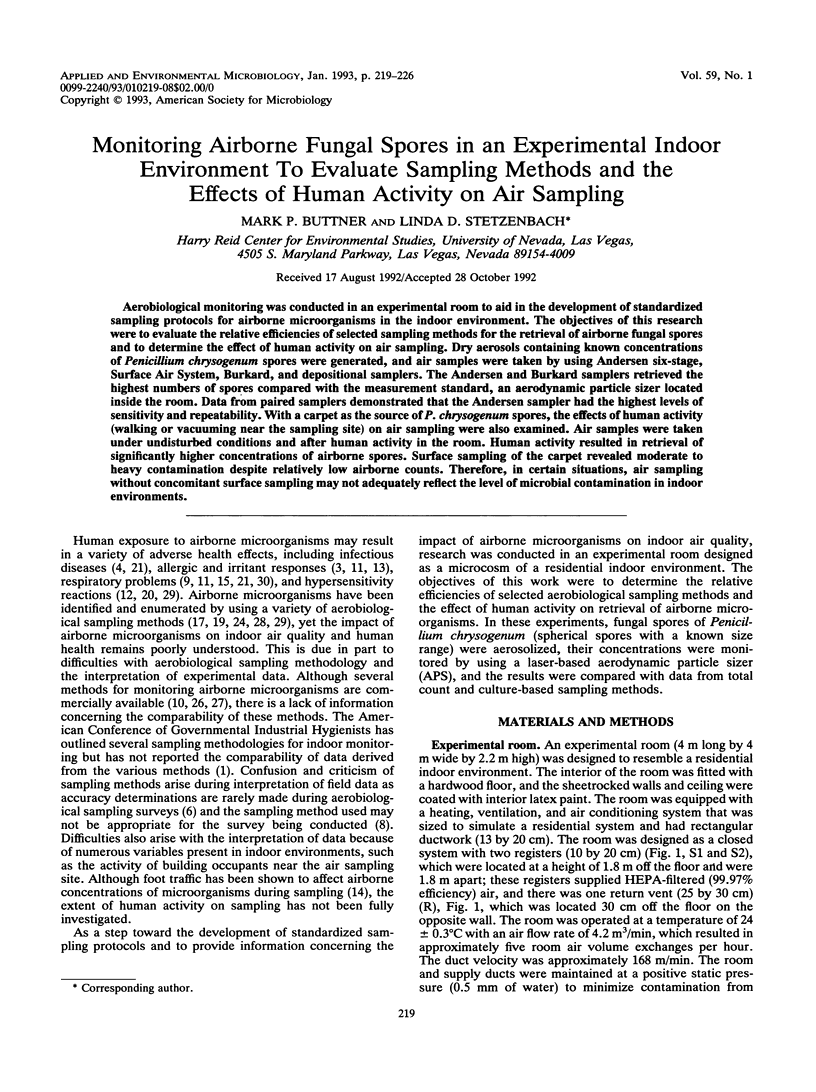
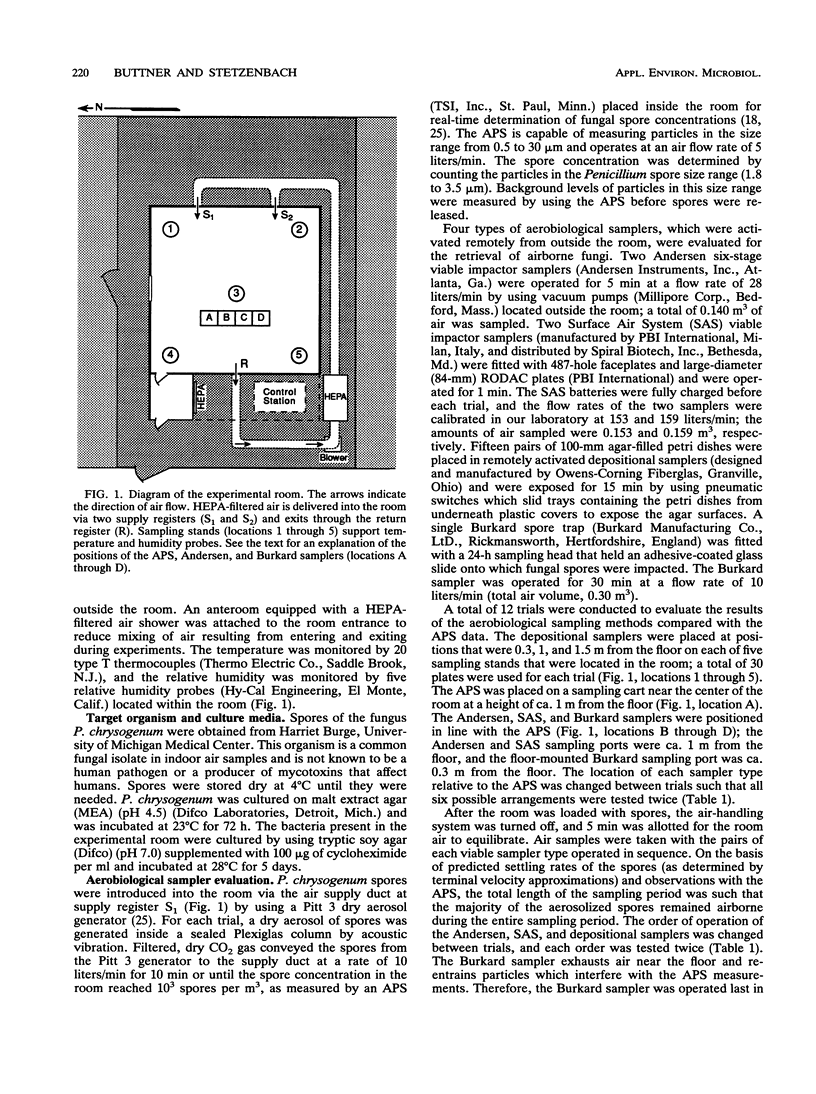
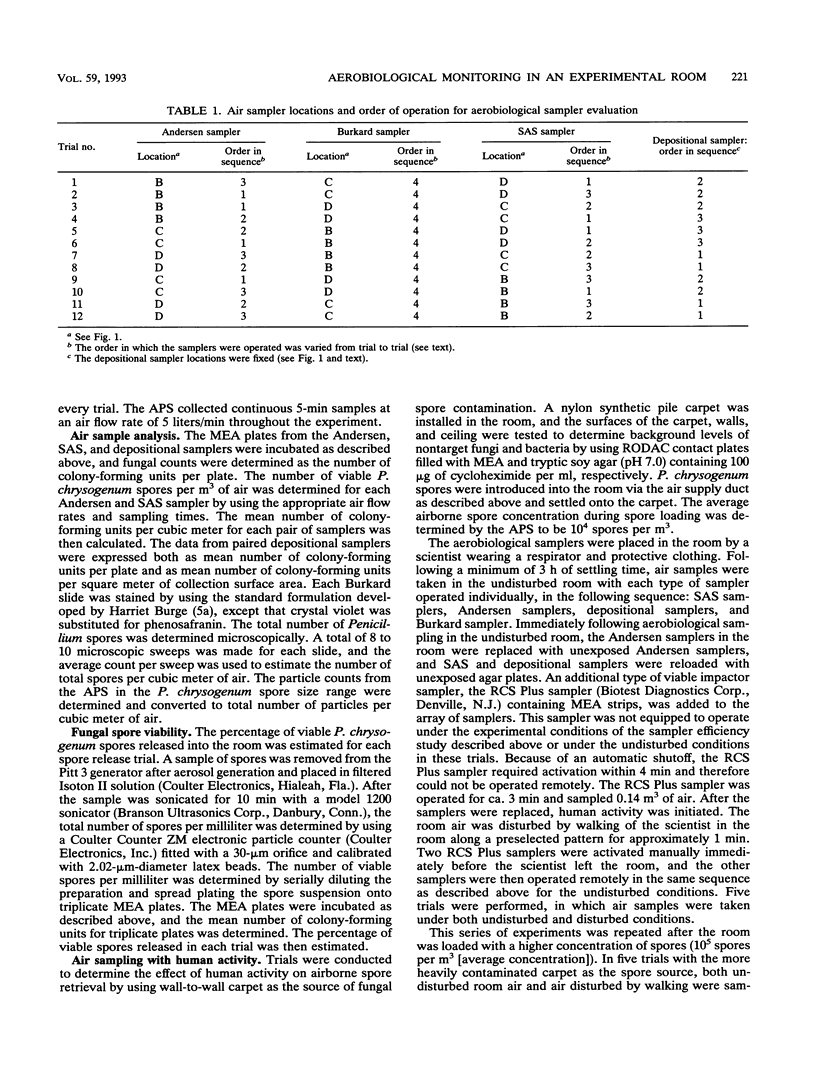
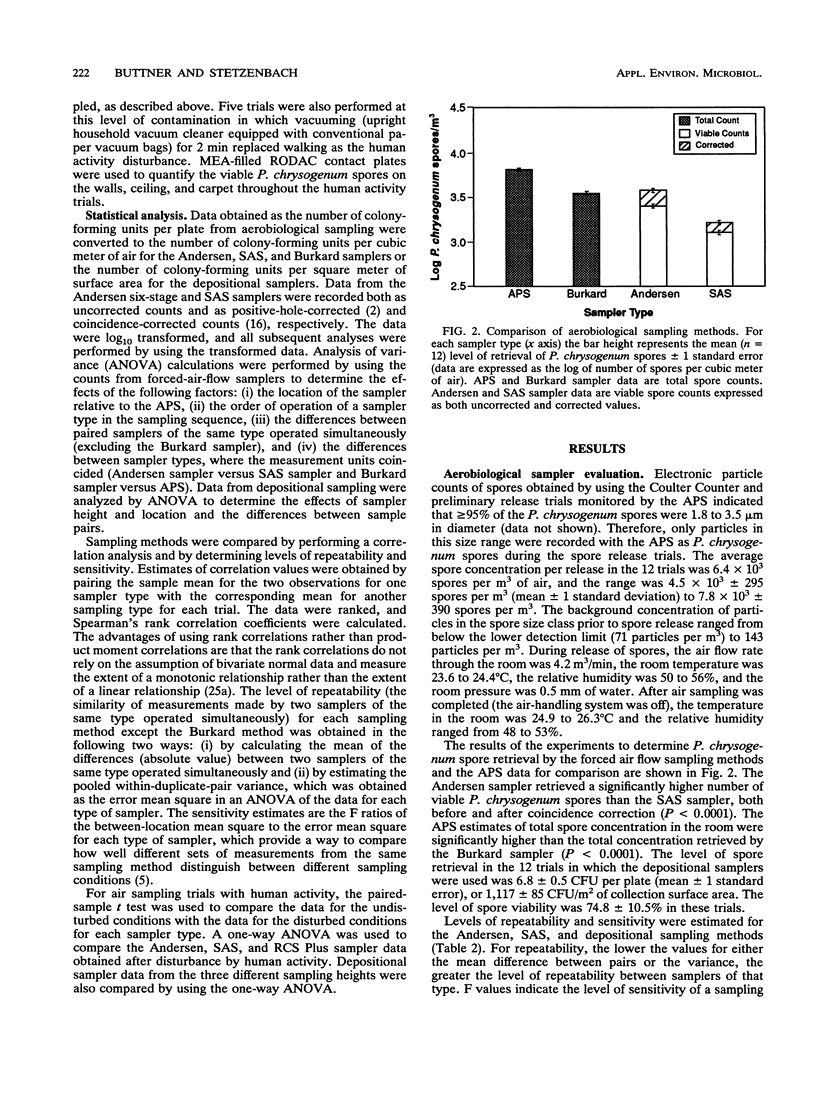
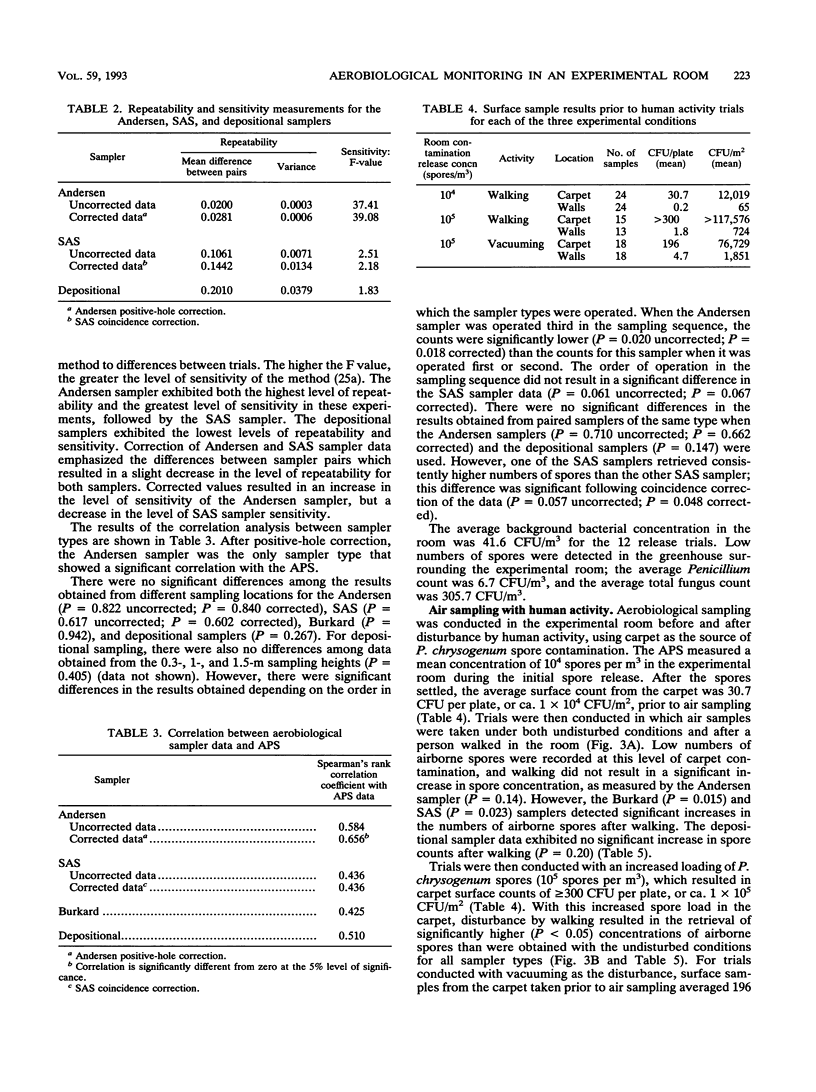
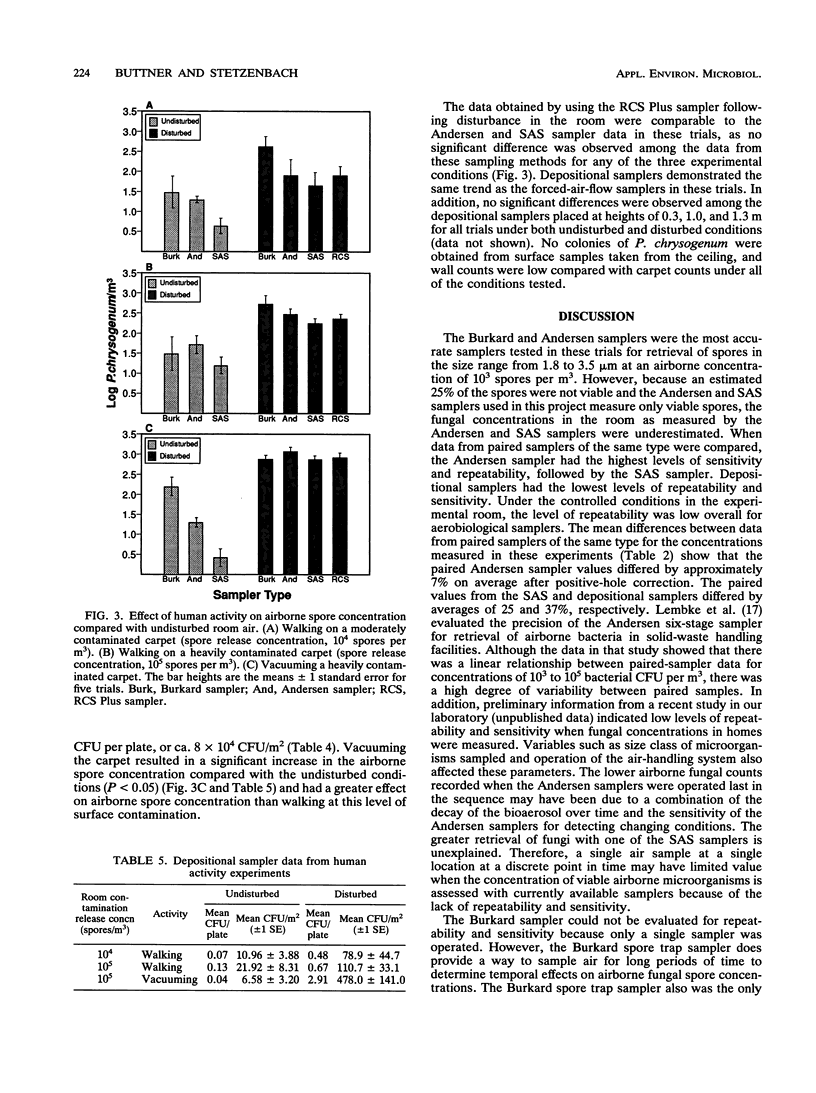
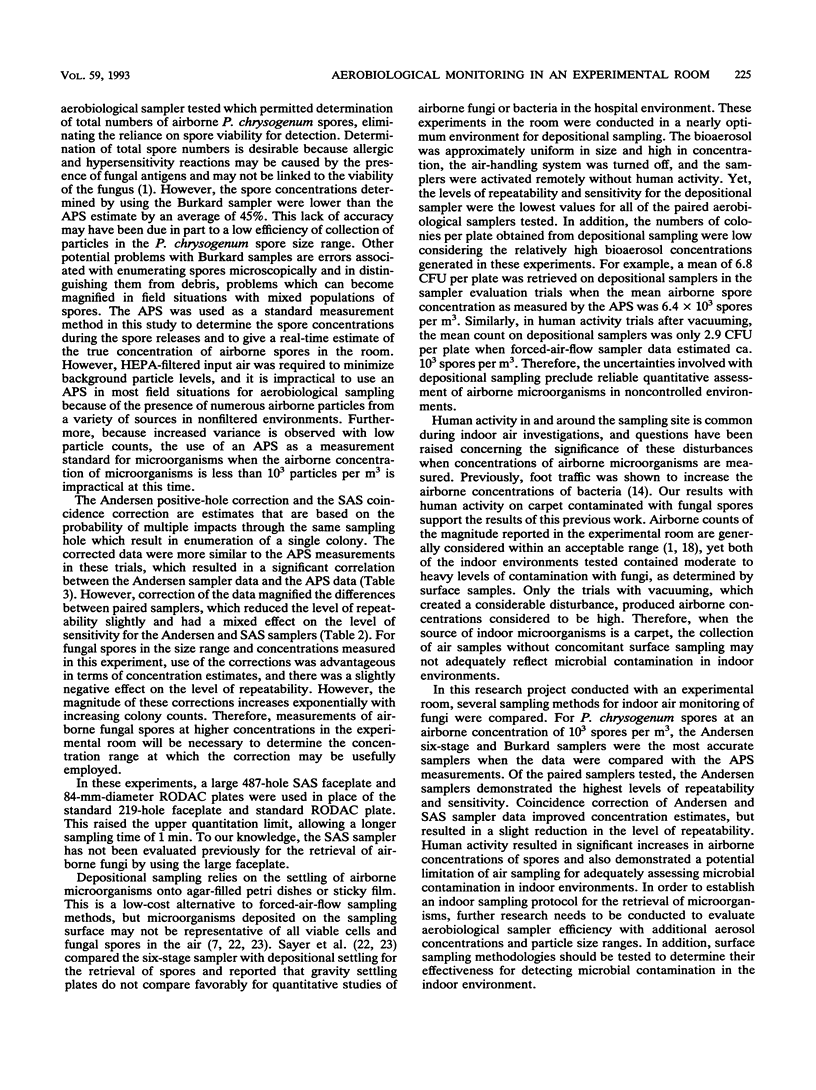
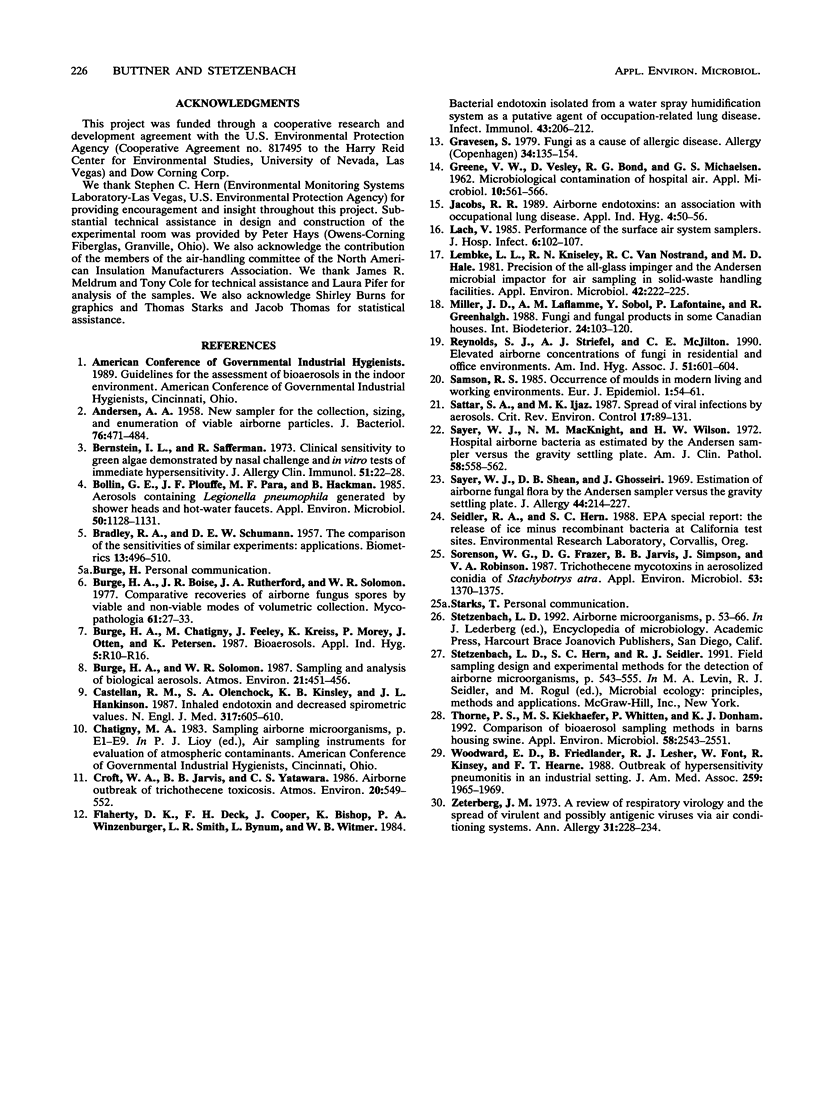
Selected References
These references are in PubMed. This may not be the complete list of references from this article.
- ANDERSEN A. A. New sampler for the collection, sizing, and enumeration of viable airborne particles. J Bacteriol. 1958 Nov;76(5):471–484. doi: 10.1128/jb.76.5.471-484.1958. [DOI] [PMC free article] [PubMed] [Google Scholar]
- Bernstein I. L., Safferman R. Clinical sensitivity to green algae demonstrated by nasal challenge and in vitro tests of immediate hypersensitivity. J Allergy Clin Immunol. 1973 Jan;51(7):22–28. doi: 10.1016/0091-6749(73)90004-3. [DOI] [PubMed] [Google Scholar]
- Bollin G. E., Plouffe J. F., Para M. F., Hackman B. Aerosols containing Legionella pneumophila generated by shower heads and hot-water faucets. Appl Environ Microbiol. 1985 Nov;50(5):1128–1131. doi: 10.1128/aem.50.5.1128-1131.1985. [DOI] [PMC free article] [PubMed] [Google Scholar]
- Burge H. P., Boise J. R., Rutherford J. A., Solomon W. R. Comparative recoveries of airborne fungus spores by viable and non-viable modes of volumetric collection. Mycopathologia. 1977 Jul 29;61(1):27–33. doi: 10.1007/BF00440755. [DOI] [PubMed] [Google Scholar]
- Castellan R. M., Olenchock S. A., Kinsley K. B., Hankinson J. L. Inhaled endotoxin and decreased spirometric values. An exposure-response relation for cotton dust. N Engl J Med. 1987 Sep 3;317(10):605–610. doi: 10.1056/NEJM198709033171005. [DOI] [PubMed] [Google Scholar]
- Flaherty D. K., Deck F. H., Cooper J., Bishop K., Winzenburger P. A., Smith L. R., Bynum L., Witmer W. B. Bacterial endotoxin isolated from a water spray air humidification system as a putative agent of occupation-related lung disease. Infect Immun. 1984 Jan;43(1):206–212. doi: 10.1128/iai.43.1.206-212.1984. [DOI] [PMC free article] [PubMed] [Google Scholar]
- GREENE V. W., VESLEY D., BOND R. G., MICHAELSEN G. S. Microbiological contamination of hospital air. I. Quantitative studies. Appl Microbiol. 1962 Nov;10:561–566. doi: 10.1128/am.10.6.561-566.1962. [DOI] [PMC free article] [PubMed] [Google Scholar]
- Gravesen S. Fungi as a cause of allergic disease. Allergy. 1979 Jun;34(3):135–154. doi: 10.1111/j.1398-9995.1979.tb01562.x. [DOI] [PubMed] [Google Scholar]
- Lach V. Performance of the surface air system air samplers. J Hosp Infect. 1985 Mar;6(1):102–107. doi: 10.1016/s0195-6701(85)80026-8. [DOI] [PubMed] [Google Scholar]
- Lembke L. L., Kniseley R. N., van Nostrand R. C., Hale M. D. Precision of the all-glass impinger and the andersen microbial impactor for air sampling in solid-waste handling facilities. Appl Environ Microbiol. 1981 Aug;42(2):222–225. doi: 10.1128/aem.42.2.222-225.1981. [DOI] [PMC free article] [PubMed] [Google Scholar]
- Samson R. A. Occurrence of moulds in modern living and working environments. Eur J Epidemiol. 1985 Mar;1(1):54–61. doi: 10.1007/BF00162313. [DOI] [PubMed] [Google Scholar]
- Sayer W. J., MacKnight N. M., Wilson H. W. Hospital airborne bacteria as estimated by the Andersen sampler versus the gravity settling culture plate. Am J Clin Pathol. 1972 Nov;58(5):558–566. doi: 10.1093/ajcp/58.5.558. [DOI] [PubMed] [Google Scholar]
- Sayer W. J., Shean D. B., Ghosseiri J. Estimation of airborne fungal flora by the Andersen sampler versus the gravity settling culture plate. 1. Isolation frequency and numbers of colonies. J Allergy. 1969 Oct;44(4):214–227. doi: 10.1016/0021-8707(69)90088-4. [DOI] [PubMed] [Google Scholar]
- Sorenson W. G., Frazer D. G., Jarvis B. B., Simpson J., Robinson V. A. Trichothecene mycotoxins in aerosolized conidia of Stachybotrys atra. Appl Environ Microbiol. 1987 Jun;53(6):1370–1375. doi: 10.1128/aem.53.6.1370-1375.1987. [DOI] [PMC free article] [PubMed] [Google Scholar]
- Thorne P. S., Kiekhaefer M. S., Whitten P., Donham K. J. Comparison of bioaerosol sampling methods in barns housing swine. Appl Environ Microbiol. 1992 Aug;58(8):2543–2551. doi: 10.1128/aem.58.8.2543-2551.1992. [DOI] [PMC free article] [PubMed] [Google Scholar]
- Woodard E. D., Friedlander B., Lesher R. J., Font W., Kinsey R., Hearne F. T. Outbreak of hypersensitivity pneumonitis in an industrial setting. JAMA. 1988 Apr 1;259(13):1965–1969. [PubMed] [Google Scholar]
- Zeterberg J. M. A review of respiratory virology and the spread of virulent and possibly antigenic viruses via air conditioning systems. I. Ann Allergy. 1973 May;31(5):228–234. [PubMed] [Google Scholar]


